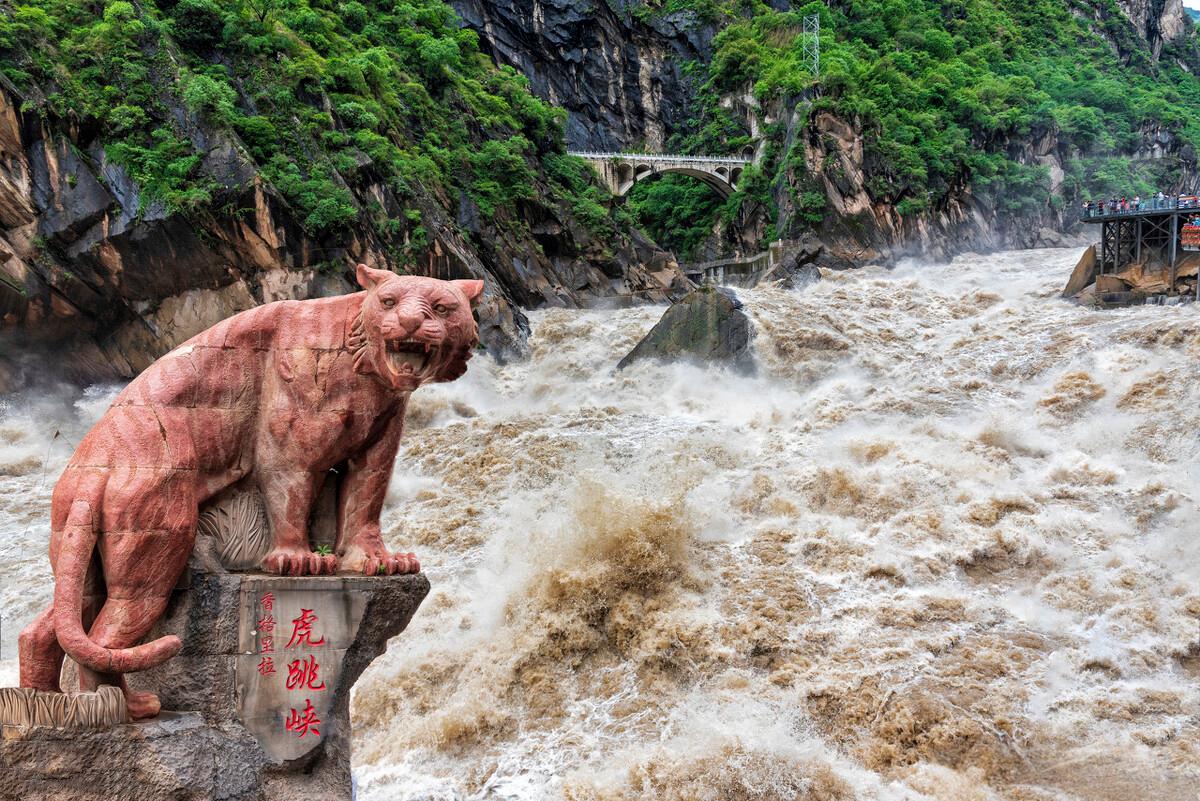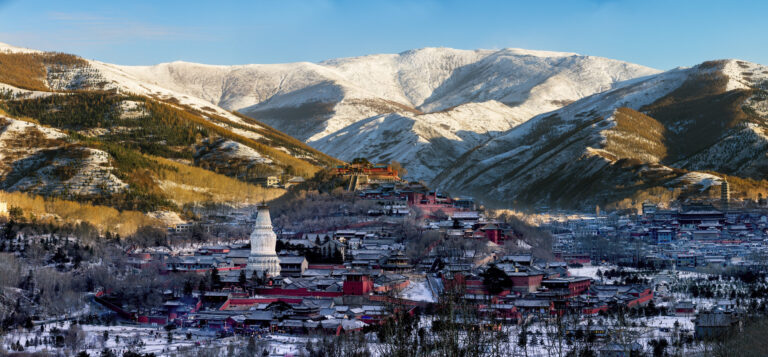Tiger Leaping Gorge: The Ultimate Guide to China’s Most Spectacular Canyon Adventure
Tiger Leaping Gorge stands as one of the world’s most breathtaking natural wonders. This dramatic canyon carved by the Jinsha River offers an unforgettable hiking experience in Yunnan Province. The gorge’s towering cliffs and rushing waters create a landscape that captivates adventurous travelers from around the globe.
Quick Facts
Location: Yunnan Province, China, 60 km north of Lijiang, near Shangri-La.
Length: Approximately 15 kilometers along the Jinsha River.
Elevation Drop: Over 3,900 meters from peak to riverbed.
Mountains: Flanked by Jade Dragon Snow Mountain and Haba Snow Mountain.
Annual Visitors: Over 200,000 (estimated based on recent trends).
UNESCO Status: World Heritage Site since 2003 (Three Parallel Rivers).
Origin of Name: Legend of a tiger leaping across the narrowest point.
Key Attraction: Tiger Leaping Rock, a mid-river boulder.
Activities: Hiking, photography, and wildlife spotting.
Table of Contents
History and Cultural Significance
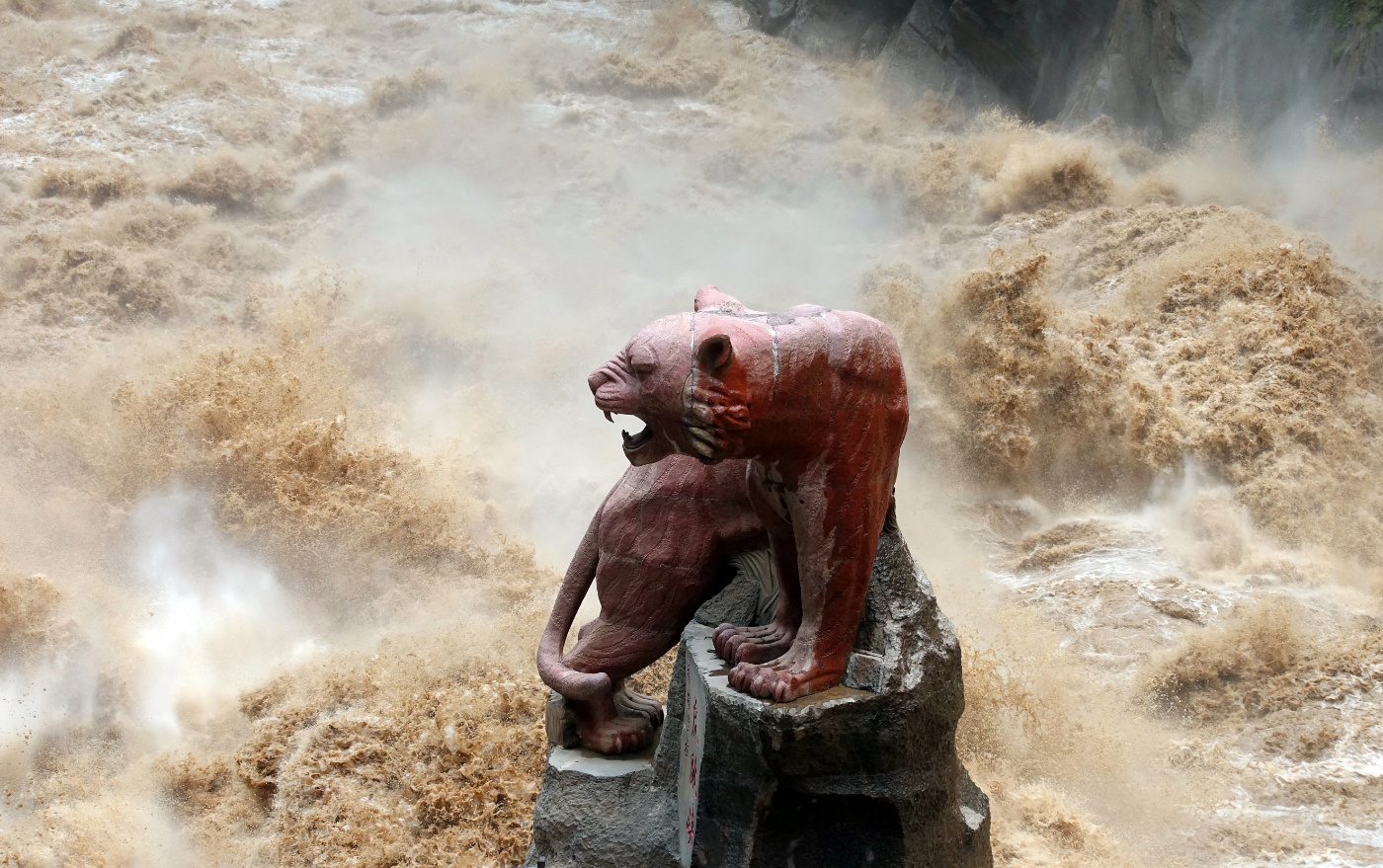
Tiger Leaping Gorge carries deep cultural meaning within Chinese folklore and history. The gorge’s name originates from an ancient legend about a tiger escaping hunters. According to local stories, a tiger leaped across the narrowest point of the gorge to escape capture. This legendary leap inspired the gorge’s poetic Chinese name, Hutiao Xia.
The inhabitants of the gorge are primarily the indigenous Nakhi people, who live in a handful of small hamlets. The Naxi people have called this region home for over a thousand years. Their rich cultural traditions include unique pictographic writing systems and matriarchal social structures. These communities maintain traditional lifestyles despite increasing tourism.
The Naxi people developed intricate irrigation systems along the gorge’s terraced slopes. Their agricultural practices demonstrate remarkable adaptation to challenging mountain terrain. Traditional crops include barley, wheat, and various mountain vegetables. Local families continue practicing ancient farming methods passed down through generations.
Dongba religion represents the spiritual heart of Naxi culture. This shamanistic belief system incorporates elements of Tibetan Buddhism, Taoism, and animism. Sacred sites throughout the gorge reflect these spiritual traditions. Travelers often encounter prayer flags and small shrines along hiking trails.
Historical trade routes once connected the gorge to broader regional networks. Tea horse roads facilitated commerce between Tibet, Yunnan, and Sichuan provinces. Merchants transported tea, salt, and precious metals through these treacherous mountain passes. Ancient stone pathways still exist along certain sections of the gorge.
Modern conservation efforts aim to preserve both natural landscapes and cultural heritage. The gorge’s designation as a UNESCO World Heritage site recognizes its outstanding universal value. Protection measures help maintain traditional Naxi communities while managing increasing tourism pressures.
Recent decades have witnessed significant changes in local communities. Young Naxi people increasingly migrate to cities for education and employment opportunities. Tourism provides new economic alternatives for families choosing to remain in traditional villages. This transition creates both opportunities and challenges for cultural preservation.
Why Tiger Leaping Gorge is Worth a Visit
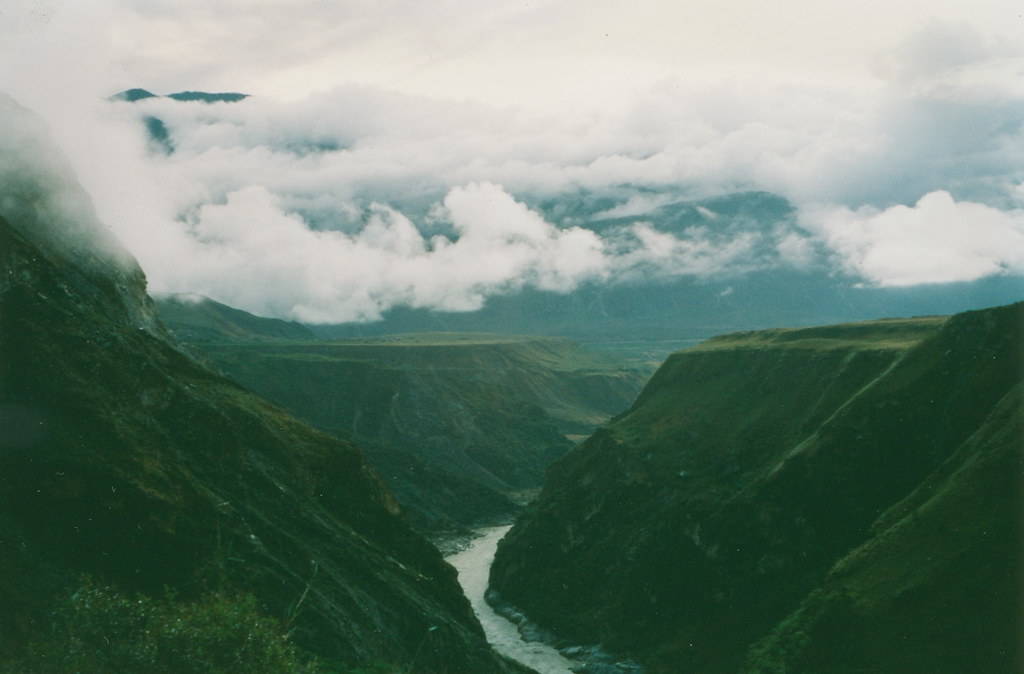
Tiger Leaping Gorge offers an unparalleled combination of natural beauty and adventure. The dramatic landscape provides photographers with endless opportunities for spectacular shots. Sunrise and sunset transform the canyon walls into a canvas of golden and crimson hues. These magical moments create memories that last a lifetime.
Turquoise waters, limestone cliffs, snow-peaked mountains, fluffy clouds and glorious light combine to make your jaw drop for the majority of this trek. The visual impact of this landscape cannot be overstated. Every turn along the trail reveals new perspectives of the gorge’s magnificent scale.
The hiking experience challenges adventurers without requiring extreme mountaineering skills. The Tiger Leaping Gorge is a long hike, and starts off steep but slowly tapers off into something doable that anyone with average fitness can easily hike these stretches. This accessibility makes it perfect for travelers seeking adventure without technical climbing requirements.
Wildlife enthusiasts discover diverse ecosystems throughout the gorge. Rare plant species thrive in the varied microclimates created by elevation changes. Bird watchers spot numerous species, including some endemic to the Himalayan region. Careful observers might glimpse larger mammals like bears and leopards in remote areas.
The cultural immersion experience provides authentic insights into Naxi traditions. Local guesthouses offer opportunities to interact with indigenous families. Traditional meals feature local ingredients prepared using ancient recipes. These cultural exchanges create meaningful connections beyond typical tourist experiences.
Adventure seekers find multiple activity options beyond hiking. Rock climbing opportunities exist for experienced climbers seeking vertical challenges. White water rafting provides thrilling river adventures during appropriate seasons. Photography workshops help capture the gorge’s dramatic beauty effectively.
The gorge’s proximity to other Yunnan attractions enhances its appeal. Lijiang’s Old Town offers UNESCO World Heritage charm. Shangri-La provides Tibetan cultural experiences. Dali’s ancient architecture and Erhai Lake create additional exploration opportunities. This concentration of attractions allows efficient multi-destination itineraries.
Environmental education opportunities abound throughout the gorge. Interpretive trails explain geological formations and ecological relationships. Visitors learn about conservation challenges facing mountain ecosystems. These educational components add depth to the adventure experience.
Highlights and Must-See Spots
The Upper Gorge represents the most accessible and popular section for visitors. This area features the iconic Tiger Leaping Stone, a massive boulder marking the legendary tiger’s crossing point. The viewing platform provides spectacular panoramic views of the rushing Jinsha River below. Most day-trip visitors focus their time in this easily accessible section.
The stone itself sits dramatically in the river’s narrowest point. Local legends claim a tiger could leap from this rock to the opposite shore. The powerful river current creates impressive rapids around the boulder. Photographers capture stunning images of water cascading around this natural landmark.
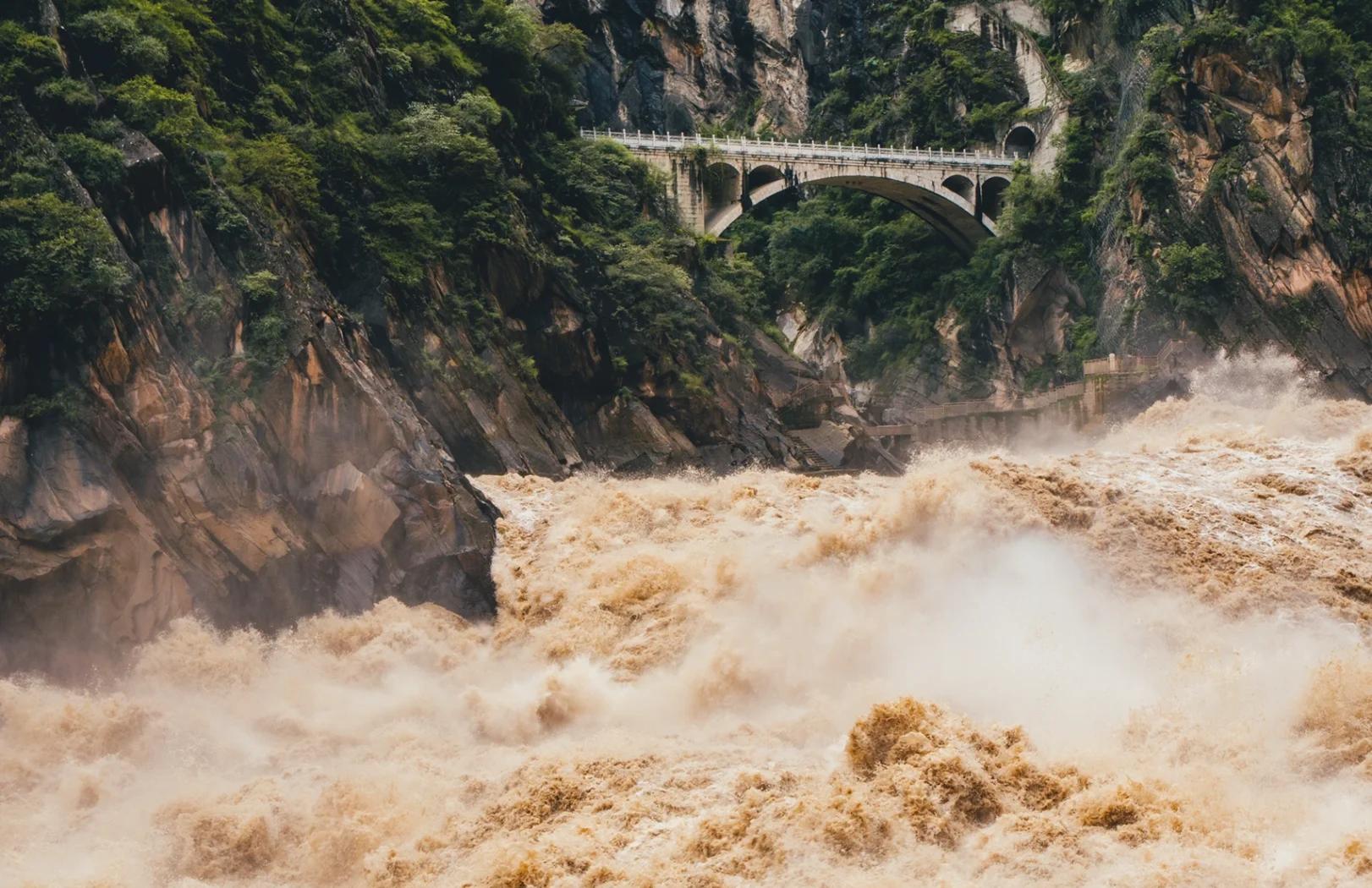
The Middle Gorge challenges hikers with more demanding terrain and fewer crowds. This section offers intimate encounters with the gorge’s raw power. The trail winds through diverse landscapes, from dense forests to exposed cliff faces. Adventurous travelers find this section most rewarding for its authentic wilderness experience.
Several spectacular waterfalls punctuate the gorge’s walls throughout the middle section. These cascades create refreshing rest stops during hot hiking days. The sound of falling water adds to the gorge’s natural symphony. Many waterfalls remain unnamed, allowing visitors to discover hidden gems.

The Lower Gorge provides the most pristine and challenging hiking experience. This remote section requires serious commitment and proper preparation. Trails become less defined, demanding strong navigation skills. The rewards include unparalleled solitude and pristine natural beauty.
Sacred pools form in quieter river sections, particularly in the lower gorge. These natural swimming holes offer refreshing breaks during hot weather. Crystal-clear water reflects surrounding cliff faces. Local Naxi people consider some pools sacred, requiring respectful behavior from visitors.
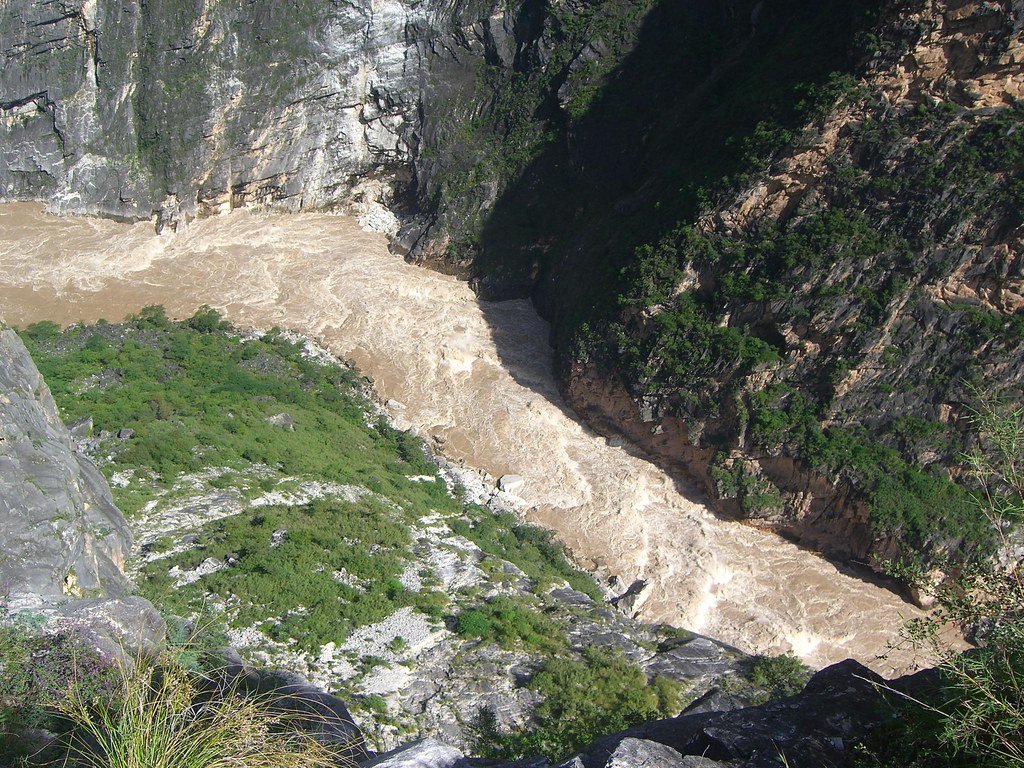
The High Trail represents the main trekking route connecting all three gorge sections. This elevated path provides consistent spectacular views while avoiding river-level dangers. Well-maintained sections alternate with more challenging terrain. Strategically placed guesthouses provide rest stops and overnight accommodations.
Several viewpoints along the High Trail offer unique perspectives of the gorge’s grandeur. The 28 Bends section challenges hikers with steep switchbacks but rewards them with panoramic vistas. Sunrise and sunset viewpoints provide optimal lighting for photography. These locations become gathering spots for hikers sharing the experience.
Traditional Naxi villages dot the gorge’s upper reaches, offering cultural highlights. Walnut Grove Village provides authentic accommodation and local cuisine. Tina’s Guesthouse has become legendary among backpackers for its hospitality. These cultural encounters enrich the hiking experience significantly.
Tiger Leaping Gorge Hiking: The Complete Trekking Experience
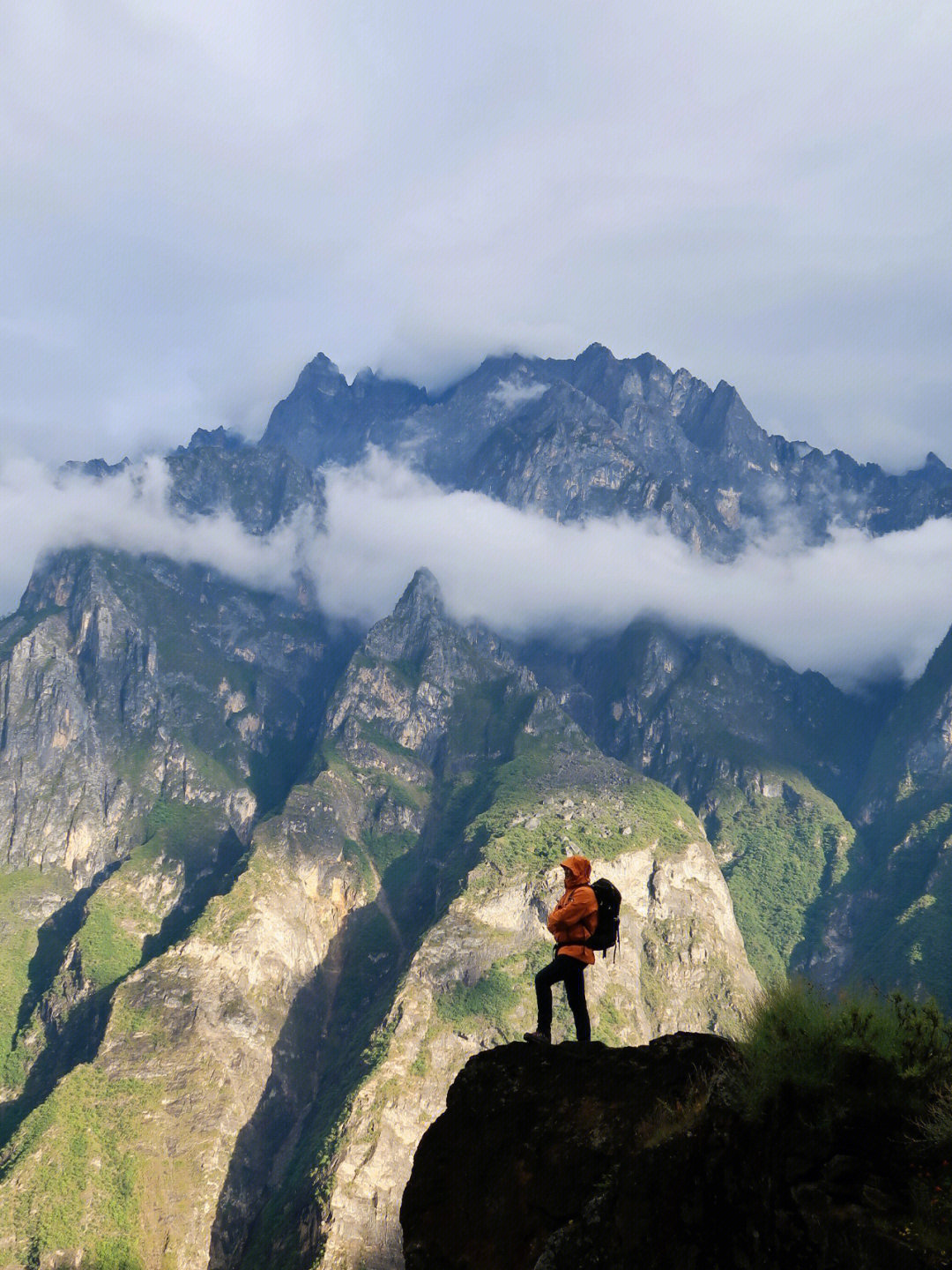
Tiger Leaping Gorge is one of the most popular hikes amongst foreigners visiting China, offering a two-day hike winding along a path halfway up massive mountains. The trek provides an exceptional combination of accessible adventure and spectacular mountain scenery that appeals to hikers of varying experience levels.
The Classic High Trail Route
The High Trail starts from Qiaotou (‘Bridge Head’ village) and winds its way up to the middle of Haba Snow Mountain, with the most popular 2-day trek running from Naxi Family Guesthouse to Tina’s Guesthouse. This elevated route maintains consistent spectacular views while avoiding the dangerous river-level terrain.
The trail stretches approximately 22-24 kilometers total, but most hikers complete it in manageable sections over two days. Mainly foreigners take the high path above the river, and it isn’t a crowded tourist pathway – you may pass about one group of hikers each hour. This relative solitude enhances the wilderness experience significantly.
Starting points vary depending on current road conditions and construction projects. Recent reports recommend against starting from Qiao Tou due to ongoing highway construction, with many hikers now beginning at Naxi Guest House for a more pleasant experience.
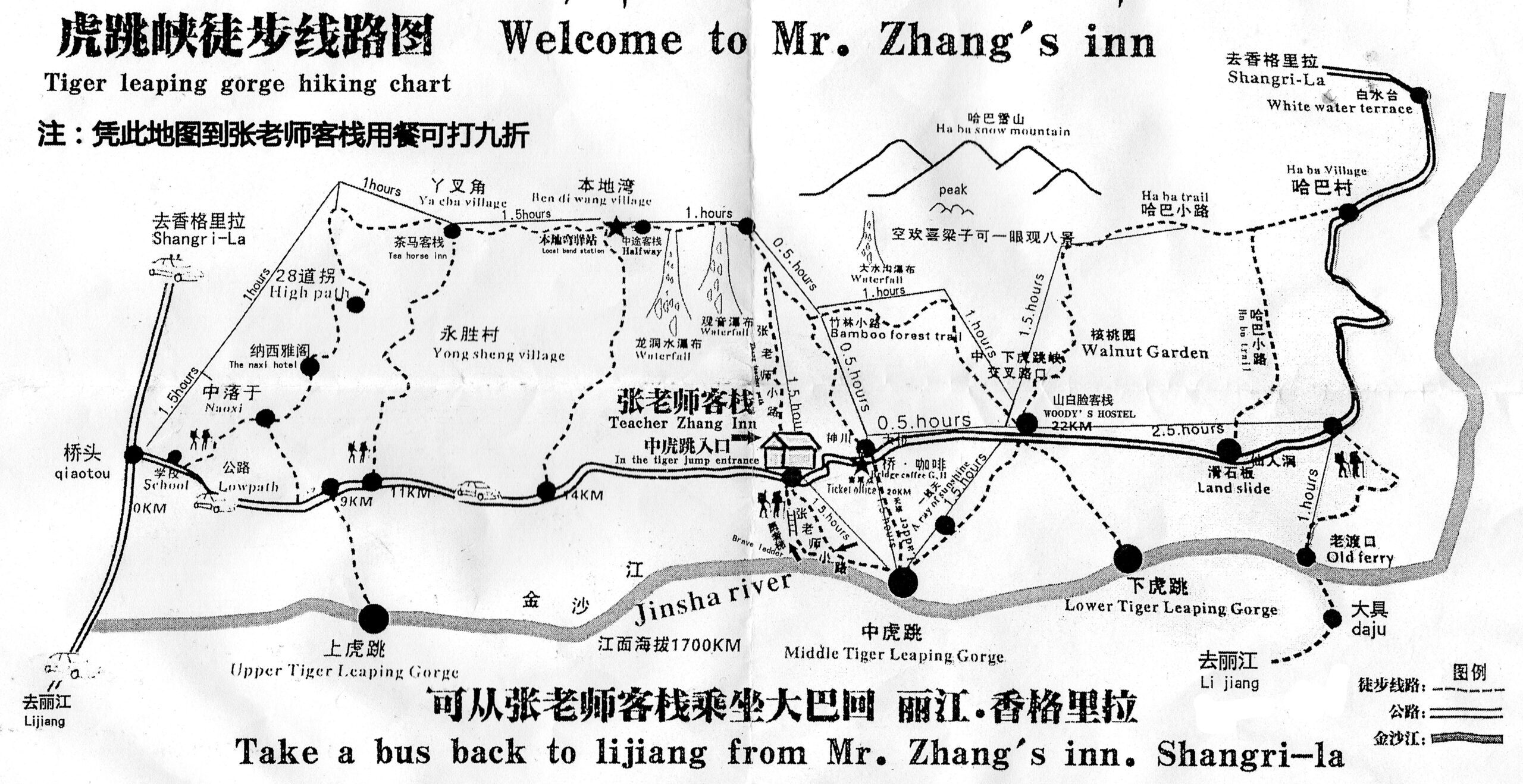
The Infamous 28 Bends Challenge
The 28 Bends section represents the toughest part of the trail, requiring hikers to zigzag their way up for 500+ meters (1,650+ feet) of elevation along twisting, steep bends. This challenging ascent typically occurs about 30 minutes from the Naxi Guesthouse and tests even moderately fit hikers.
The steep switchbacks demand steady pacing and frequent rest stops. Most hikers find themselves breathing heavily during this ascent, but the effort rewards them with increasingly spectacular views. The zigzag pattern helps manage the steep grade, making the climb achievable for determined hikers.
After conquering the 28 Bends, the trail becomes significantly easier. Most of the rest is relatively level or descending with few climbs, allowing hikers to enjoy the scenery without constant physical exertion. This design makes the trek accessible to a broader range of fitness levels.
Day-by-Day Hiking Breakdown
Day One: Naxi Guesthouse to Tea Horse Guesthouse The first day covers approximately 6-8 kilometers and includes the challenging 28 Bends section. Most hikers complete this section in 3-4 hours, depending on fitness levels and rest stops. The Tea Horse Guesthouse provides comfortable accommodation and excellent mountain views for the overnight stay.
Day Two: Tea Horse Guesthouse to Tina’s Guesthouse The second day covers roughly 10-11km, mostly even terrain with about 200m uphill in total and a descent at the end. Hikers can make a snack stop at Halfway-Inn after about 5km, breaking up the day’s journey pleasantly.
Alternative Hiking Options
One-Day Hiking Routes A perfect half-day trip involves taking a car to Tea Horse Guesthouse and then hiking downhill to Halfway Guesthouse, offering a relatively flat and easy trail with stunning views. This option suits travelers with limited time or those preferring easier terrain.
Single-day options focus on the most scenic sections without overnight accommodation requirements. These shorter routes still provide spectacular gorge views and cultural interactions with local communities.
The Extreme River Route Advanced hikers can attempt the dangerous river-level route, though this requires serious preparation and local guide assistance. This route includes the terrifying ladder path known as the 168 Steps for the Brave, featuring three stages of vertical metal ladders. Only experienced hikers should attempt this challenging alternative.
Essential Hiking Preparations
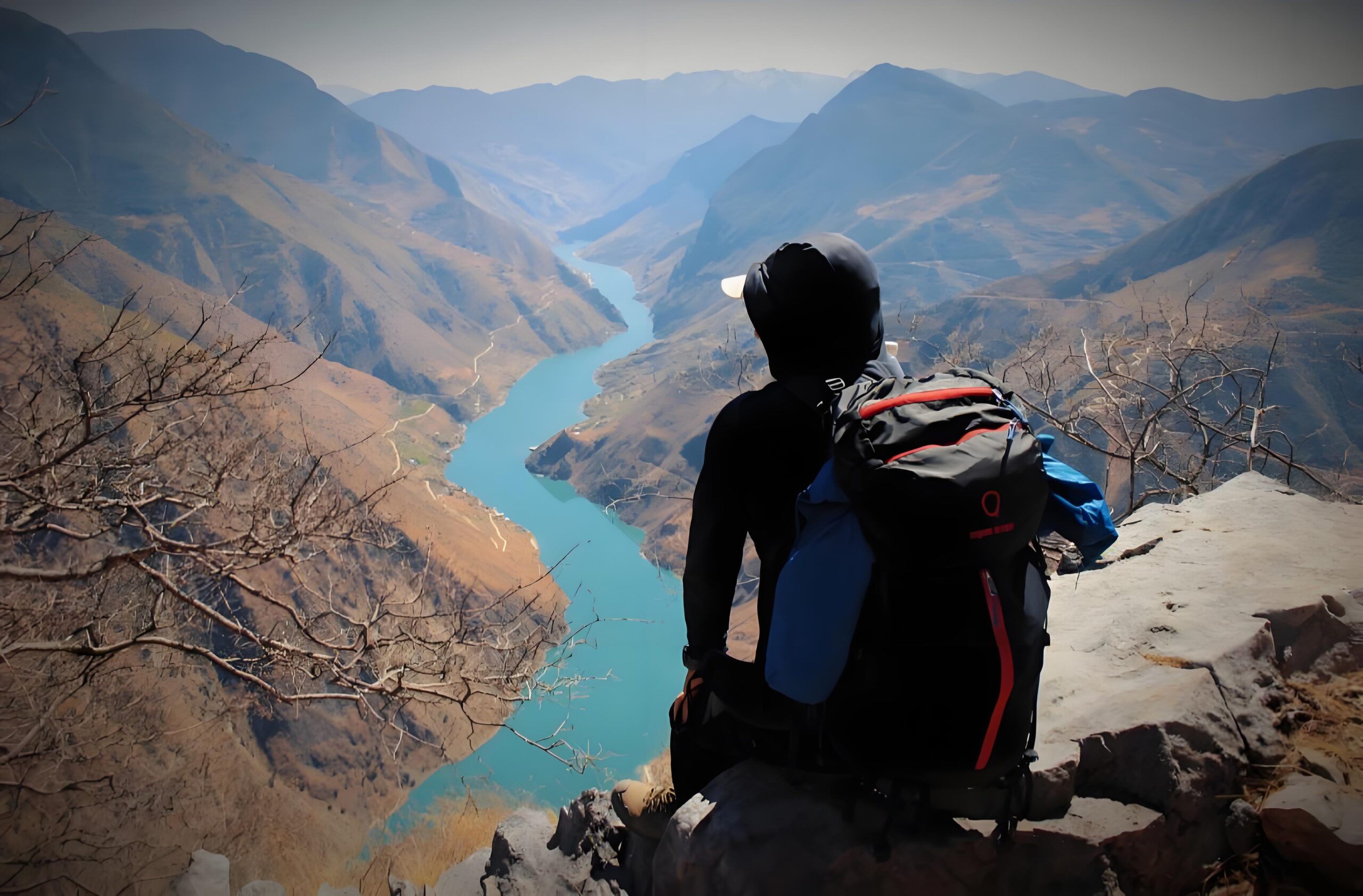
Physical preparation should begin weeks before the trek. Regular cardio exercise and hill walking help build necessary endurance. The 28 Bends section particularly benefits from pre-trek conditioning focused on leg strength and cardiovascular fitness.
Equipment requirements include sturdy hiking boots, weather-appropriate clothing layers, and adequate water supplies. Trekking poles provide valuable support during steep sections and river crossings. A reliable headlamp becomes essential for early morning starts or evening arrivals.
Navigation tools include detailed trail maps and GPS devices or smartphone apps with offline capabilities. While the main trail is well-marked, side paths and shortcuts can confuse inexperienced hikers. Emergency whistle and first aid supplies provide important safety backup.
Weather contingency planning accounts for rapid mountain weather changes. Waterproof gear protects against sudden storms common in mountain environments. Extra warm layers handle cool morning and evening temperatures, especially at higher elevations.
Accommodation Along the Trail

Strategic guesthouse placement allows comfortable two-day trekking without camping gear. Popular stops include Teahorse Guesthouse, Halfway Guesthouse in Bendiwan village, and Tina’s Guesthouse before finishing at Walnut Garden’s Tibet Guesthouse. Each location offers meals, basic accommodation, and rest opportunities.
Guesthouse standards vary but generally provide clean beds, shared bathrooms, and hearty local meals. Most establishments cater specifically to international hikers, offering English menus and cultural exchange opportunities. Advance reservations become essential during peak hiking seasons.
Practical Travel Tips
Proper preparation ensures a safe and enjoyable Tiger Leaping Gorge experience. Physical fitness requirements vary depending on chosen hiking routes and duration. The hike typically takes 1 to 2 days, allowing you to choose between a leisurely one-day trek or a more immersive two-day journey, depending on your physical condition.
Essential gear includes sturdy hiking boots with good ankle support. The rocky terrain demands proper footwear to prevent injuries. Waterproof clothing protects against sudden mountain weather changes. A reliable rain jacket becomes essential during monsoon seasons.
Pack layers for varying temperatures throughout the day. Morning temperatures can be quite cool, especially at higher elevations. Afternoon sun creates warm conditions requiring lighter clothing. Evening temperatures drop significantly, necessitating warm layers.
Bring adequate water supplies, though refill opportunities exist along the main trails. Water purification tablets provide backup safety for questionable sources. High-energy snacks sustain energy levels during long hiking days. Local guesthouses provide meals, but carrying emergency food remains wise.
Navigation tools include detailed trail maps and a reliable compass or GPS device. While main trails are well-marked, side trails and shortcuts can confuse inexperienced hikers. Download offline maps before departure since cell phone coverage remains spotty.
Medical preparation includes basic first aid supplies and personal medications. Altitude sickness rarely affects gorge hikers, but individuals sensitive to elevation changes should take precautions. Inform guesthouse operators about any medical conditions requiring special attention.
Money considerations include carrying sufficient cash since ATMs don’t exist within the gorge. Small denominations help with guesthouse payments and local purchases. Credit cards work in some establishments, but cash remains the preferred payment method.
Language barriers exist since English proficiency varies among local operators. Learning basic Mandarin phrases enhances communication with local people. Translation apps provide helpful backup for complex conversations.
Safety precautions include informing others about hiking plans and expected return times. Trail conditions can change rapidly due to weather or maintenance work. Stay on designated trails to avoid dangerous cliff areas and unstable terrain.
Best Time to Visit Tiger Leaping Gorge

Generally, if you prefer majestic views, the best time for you to visit is from May to October. During this period, the water is yellow because of the rainy season, making it look more powerful. However, seasonal considerations significantly impact the hiking experience and should guide travel planning decisions.
Spring months (March to May) offer excellent hiking conditions with moderate temperatures and clear skies. Wildflowers bloom throughout the gorge, creating colorful landscape displays. Snow-capped peaks provide dramatic backdrops against clear blue skies. This season attracts fewer crowds than peak summer months.
Summer season (June to September) brings warm temperatures but also increased rainfall. However, from June to September, it rains more frequently. The gorge might close temporarily due to dangerous conditions. Despite weather challenges, summer offers lush green landscapes and powerful river flows.
The best time to explore Tiger Leaping Gorge is August/September/October (which works perfectly for those who have just finished summer camp in China) or April/May, as both of these periods tend to be the drier months with optimal hiking conditions.
Autumn months (September to November) provide ideal conditions for most travelers. Clear skies offer excellent visibility for photography and scenic appreciation. Comfortable temperatures make hiking more enjoyable throughout the day. Fall foliage adds golden colors to the already spectacular landscape.
Winter season (December to February) presents challenges but also unique opportunities. Snow occasionally dusts higher elevations, creating dramatic contrasts. Clearer skies provide exceptional visibility of distant mountain ranges. However, some guesthouses close during winter months, limiting accommodation options.
Weather patterns vary significantly with elevation changes throughout the gorge. River-level temperatures remain relatively stable year-round. Higher trail sections experience greater temperature fluctuations and weather volatility. Microclimates create localized weather conditions that can change rapidly.
Monsoon season impacts trail conditions and safety considerations. Heavy rains can trigger rockslides and make trail sections dangerous. River levels rise dramatically, creating hazardous crossing points. Local authorities may close certain trail sections during severe weather periods.
Dry season offers the most predictable and safe hiking conditions. Trail maintenance occurs primarily during these months. Guesthouse operators stock supplies and prepare facilities for peak tourism seasons. Photography conditions remain optimal with consistent lighting and clear atmospheres.
Special Experiences and Activities Except Trekking
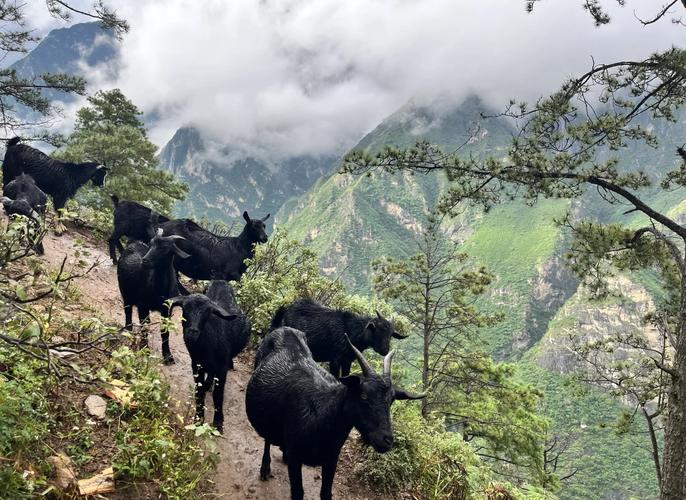
Photography opportunities in Tiger Leaping Gorge rank among the world’s best mountain landscapes. Golden hour lighting transforms the canyon walls into glowing masterpieces. Professional photographers often spend multiple days capturing different lighting conditions and perspectives. The interplay of light, shadow, and mist creates constantly changing compositions.
Sunrise photography requires early morning positioning at strategic viewpoints. The eastern rim catches first light, gradually illuminating the opposite canyon wall. Multiple exposure techniques capture the dramatic range between shadowed gorge depths and sunlit peaks. Experienced photographers recommend arriving at viewpoints at least 30 minutes before sunrise.
Night photography reveals spectacular star fields above the gorge. Light pollution remains minimal in this remote location. The Milky Way becomes clearly visible during clear nights. Long exposure techniques capture star trails against the canyon’s dramatic silhouette.
Cultural immersion experiences connect travelers with authentic Naxi traditions. Local families offer homestay opportunities in traditional courtyard houses. Guests participate in daily activities like farming, cooking, and traditional crafts. These experiences provide genuine insights into mountain community life.
Traditional Naxi music performances occur at several guesthouses along the trail. Ancient songs tell stories of local history and legends. The unique Naxi pictographic writing system fascinates visitors interested in linguistic diversity. Cultural workshops teach basic pictograph recognition and meaning.
Rock climbing opportunities exist for experienced climbers seeking vertical adventures. Several established routes offer various difficulty levels. Local guides provide equipment and route guidance for qualified climbers. Safety equipment and rescue capabilities remain limited, requiring advanced climbing experience.
White water rafting adventures operate during appropriate river conditions. Professional outfitters provide equipment and expert guides. Rapids range from Class II to Class IV, suitable for different experience levels. Safety briefings and swimming ability requirements ensure participant safety.
Botanical photography captures the gorge’s remarkable plant diversity. Endemic species exist nowhere else on Earth. Elevation changes create distinct ecological zones with unique plant communities. Spring wildflower displays provide spectacular color combinations.
Bird watching opportunities include both resident and migratory species. High-altitude species rarely seen at lower elevations frequent the gorge’s upper reaches. Specialized birding guides help identify rare species and optimal viewing locations. Early morning hours provide the best bird activity.
Traditional cooking classes teach authentic Naxi cuisine preparation. Local ingredients include mountain vegetables, highland barley, and yak products. Cooking methods reflect altitude adaptations and limited fuel availability. Participants learn to prepare traditional dishes using ancient techniques.
Frequently Asked Questions
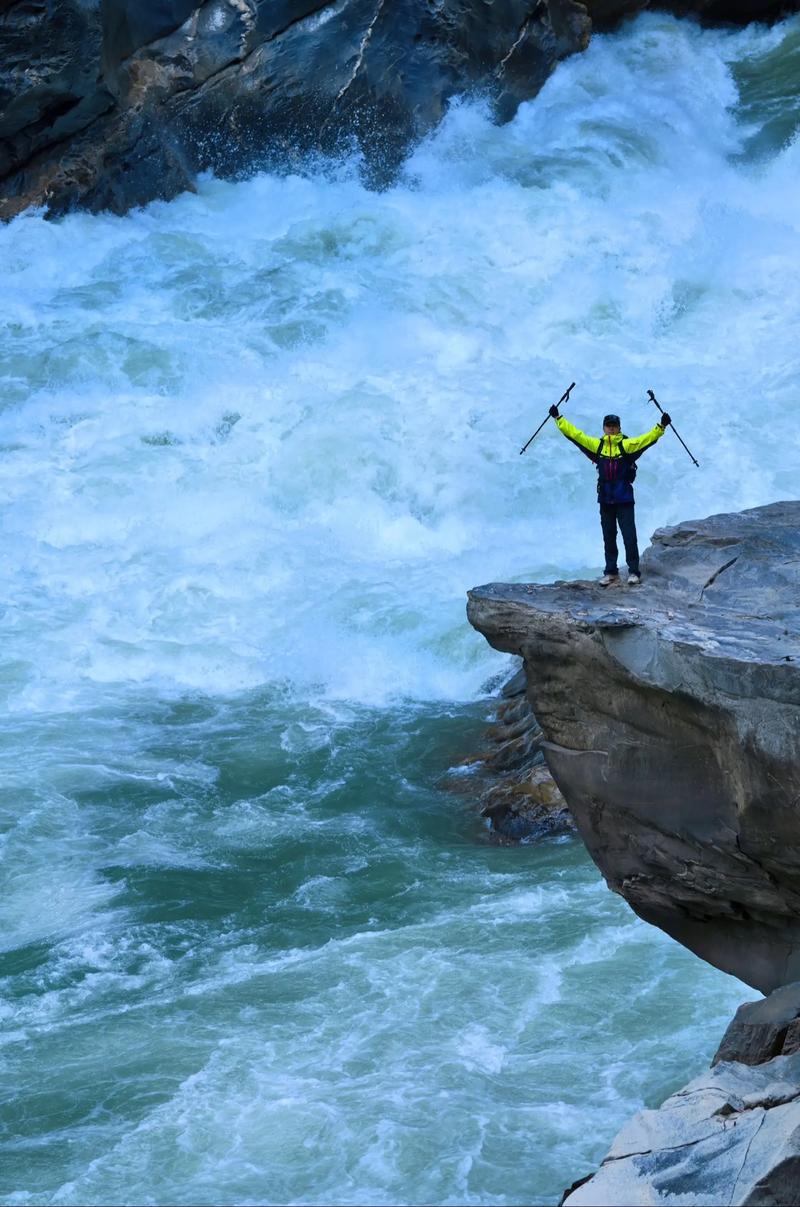
How difficult is the Tiger Leaping Gorge hike?
The difficulty level varies significantly depending on chosen routes and duration. There are very few hikes in the world that lets you come close to such massifs without having to worry about altitude sickness. Most sections require moderate fitness levels rather than technical climbing skills.
The Upper Gorge offers the easiest access with well-maintained trails. Day hikers can visit viewpoints without extensive preparation. The Middle Gorge presents moderate challenges with steeper sections and longer distances. The Lower Gorge demands serious hiking experience and proper preparation.
What should I pack for the hike?
Essential items include sturdy hiking boots, waterproof clothing, and layered clothing systems. Pack adequate water supplies, high-energy snacks, and basic first aid supplies. Navigation tools like maps and compass provide important safety backup. Sun protection becomes crucial at high altitudes.
Weather can change rapidly, requiring flexible clothing options. Rain gear protects against sudden mountain storms. Warm layers handle cool morning and evening temperatures. Lightweight but durable gear optimizes pack weight while ensuring adequate protection.
Where can I stay overnight?
Several guesthouses operate along the main hiking route. Walnut Grove Village offers the most accommodation options. Tina’s Guesthouse has gained legendary status among international backpackers. Tea Horse Guesthouse provides comfortable rooms with spectacular views.
Accommodation standards vary from basic dormitory beds to private rooms with attached bathrooms. Most guesthouses provide meals featuring local cuisine. Reservations become essential during peak hiking seasons. Payment usually requires cash since credit card acceptance remains limited.
Is it safe to hike alone?
Solo hiking is possible but requires additional precautions and preparation. Inform guesthouse operators about hiking plans and expected arrival times. Carry emergency communication devices where cell coverage exists. Stay on marked trails to avoid dangerous cliff areas.
Group hiking provides additional safety through shared resources and assistance. Local guides offer valuable knowledge about trail conditions and weather patterns. Emergency evacuation options remain limited in remote gorge sections.
What permits or fees are required?
Entry fees apply to the official gorge scenic area. Costs vary depending on intended activities and duration of stay. Some viewpoints require additional fees beyond basic entry charges. Permits for camping or extended hiking may have specific requirements.
Payment typically occurs at official entrance gates. Keep receipts for potential inspection along trails. Some private properties charge separate fees for access or accommodation. Local authorities occasionally implement temporary restrictions during dangerous conditions.
Can I visit during winter months?
Winter visits are possible but require additional preparation and flexibility. Some guesthouses close during coldest months, limiting accommodation options. Snow and ice create hazardous conditions on certain trail sections. Weather unpredictability increases safety risks.
Benefits include fewer crowds and spectacular snow-dusted landscapes. Clear winter skies provide excellent visibility for distant mountain views. Photography opportunities include unique winter compositions. Proper cold-weather gear becomes absolutely essential.
How do I arrange transportation?
First off, to get there you have to pass through the reconstructed old town of the village of Lijiang. Once you’re on the trail, a pretty painless transfer from Lijiang provides the most common access route.
Public buses operate between Lijiang and gorge entrance points. Private car arrangements offer more flexibility for custom itineraries. Tour operators provide group transportation with guide services. Taxi services exist but cost significantly more than bus options.
Planning Your Visit: Getting There, Opening Hours and Tickets

Transportation to Tiger Leaping Gorge typically begins from Lijiang, the nearest major city with airport and rail connections. Lijiang Sanyi Airport receives flights from major Chinese cities including Beijing, Shanghai, and Guangzhou. International travelers usually connect through Kunming, Yunnan’s provincial capital.
And people now usually travel from Lijiang by private car or distance coach. Bus services operate regularly between Lijiang Bus Station and gorge entrance points. Journey time ranges from 1.5 to 2 hours depending on specific destination and road conditions.
Private car rental provides maximum flexibility for exploration. International driving permits may be required depending on rental company policies. Road conditions vary from paved highways to mountain tracks. GPS navigation helps but paper maps provide essential backup.
We offer various package options combining transportation, accommodation, and guide services. Private guide arrangements cost more but provide customized experiences. Multi-day packages often include meals and accommodation.
Opening hours for the official scenic area typically run from 7:00 AM to 6:00 PM. These times may vary seasonally or due to weather conditions. Some viewpoints remain accessible outside official hours. Trail access generally remains unrestricted for registered hikers.
Ticket prices for Tiger Leaping Gorge vary depending on included attractions and activities. Basic entrance fees cover access to main viewpoints and trails. Additional charges may apply for specific attractions or guided services. Group discounts often available for larger parties.
Online booking options exist through various tour operators and official websites. Advanced reservations recommended during peak seasons. Payment methods include credit cards and mobile payment systems. Confirmation documents should be printed or available on mobile devices.
Getting There from Major Cities:
- From Kunming: Fly to Lijiang (1 hour) then bus to gorge (2 hours), or drive directly (6 hours)
- From Chengdu: Fly to Lijiang (1.5 hours) then bus to gorge, or drive (8 hours)
- From Beijing/Shanghai: Fly to Kunming then connect to Lijiang, or direct flights to Lijiang
Accommodation Booking:
Peak season reservations required 2-4 weeks in advance Shoulder season bookings recommended 1-2 weeks ahead Walk-in availability possible during off-peak periods Payment typically required in cash upon arrival
Transportation Costs:
- Lijiang to gorge by bus: 20-30 RMB per person
- Private car rental: 300-500 RMB per day
- Taxi service: 200-400 RMB one way
- Tour group transportation: 100-200 RMB per person
Conclusion

Tiger Leaping Gorge stands as one of China’s most magnificent natural treasures, offering adventurous travelers an unforgettable experience combining stunning landscapes, cultural immersion, and physical challenge. China’s Tiger Leaping Gorge is hailed as one of the world’s best multi-day hikes.
The gorge’s dramatic scale and accessibility make it perfect for travelers seeking adventure without extreme technical requirements. Whether choosing a single-day visit to the Upper Gorge or a multi-day trekking adventure, visitors discover landscapes that remain etched in memory forever.
Planning considerations include seasonal weather patterns, physical preparation, and cultural sensitivity toward local Naxi communities. Proper preparation ensures safe and rewarding experiences while supporting sustainable tourism development in this remarkable region.
The combination of natural beauty, cultural heritage, and adventure opportunities creates an experience that appeals to diverse traveler interests. Photographers capture spectacular images, hikers challenge themselves on world-class trails, and cultural enthusiasts connect with authentic indigenous traditions.
Environmental conservation and cultural preservation efforts require responsible tourism practices. Visitors play important roles in supporting local communities while protecting the gorge’s natural and cultural resources for future generations.
A Personal Note from Our Team
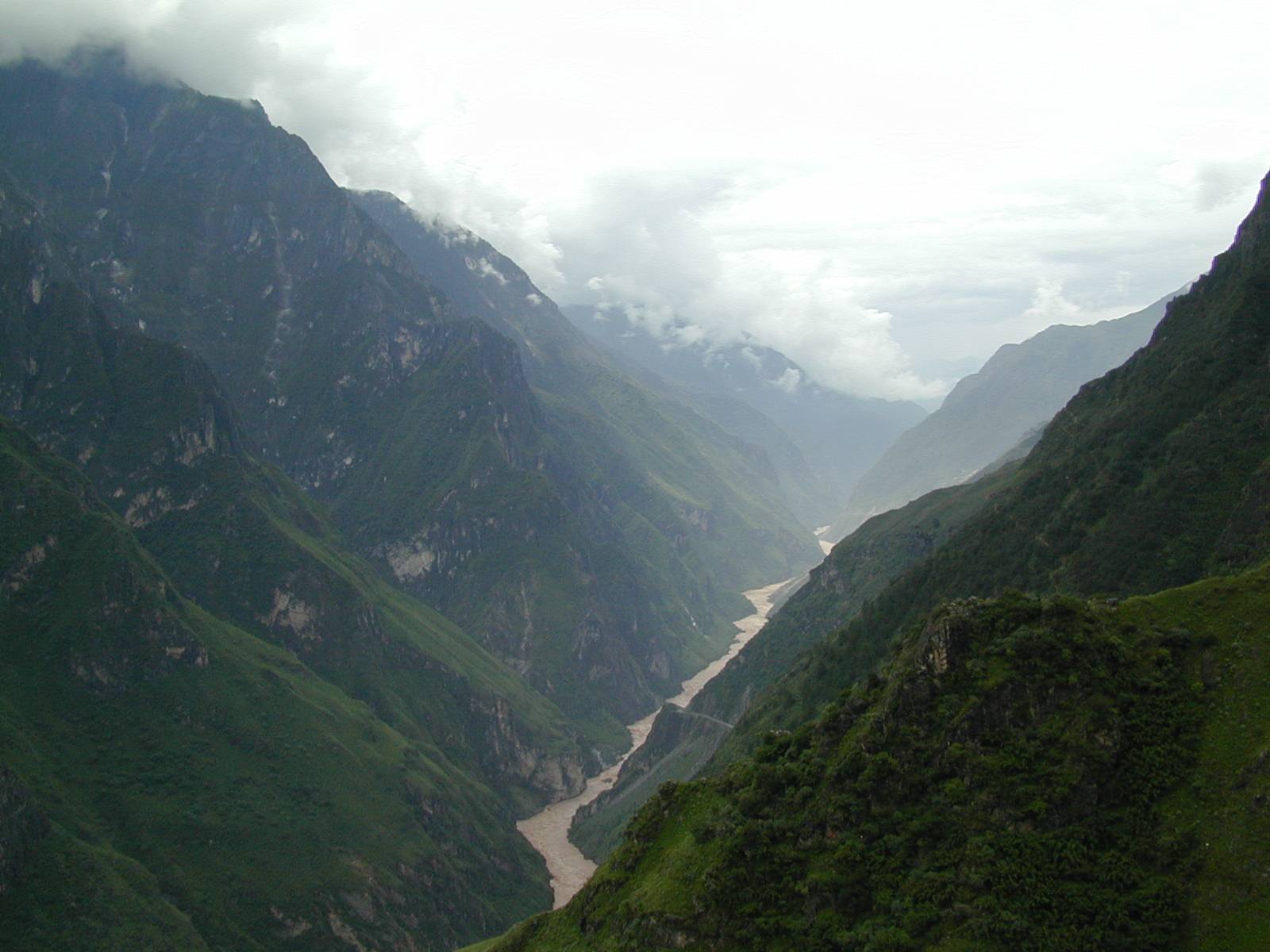
Our team at Travel China With Me has guided hundreds of travelers through Tiger Leaping Gorge over the past decades. Each journey reveals new perspectives on this magnificent landscape and its resilient local communities. We’ve witnessed sunrise breaking over snow-capped peaks, shared traditional meals with Naxi families, and helped travelers achieve personal goals they never thought possible.
The gorge teaches lessons extending far beyond spectacular scenery. It demonstrates the power of natural forces, the resilience of indigenous cultures, and the rewards of stepping outside comfort zones. Many guests describe their Tiger Leaping Gorge experience as transformative, not just because of physical accomplishment, but due to connections formed with landscape and people.
We’ve seen the gorge evolve over years of guiding visitors. Infrastructure improvements enhance safety while maintaining the wilderness character that makes this destination special. Local communities balance traditional lifestyles with tourism opportunities, creating authentic experiences that benefit both visitors and residents.
Our commitment extends beyond single visits to long-term relationships supporting sustainable tourism development. We work directly with local guesthouses, support environmental conservation efforts, and promote cultural understanding between international visitors and Naxi communities.
Every Tiger Leaping Gorge adventure begins with proper planning and realistic expectations. Our local expertise helps travelers choose appropriate routes, prepare effectively, and maximize their experience while respecting local customs and environmental considerations. Contact us to begin planning your own Tiger Leaping Gorge adventure!


